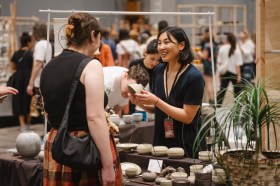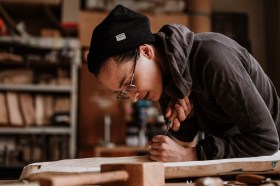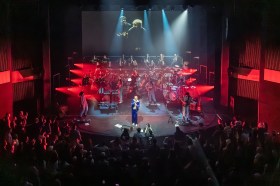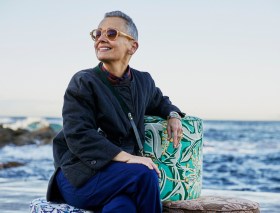Among the works chosen for Lawrence Wilson Art Gallery’s recent Lines in the Sand: Women from the West exhibition, there is one that stands out for its bold, abstract energies which simply are impossible to ignore.
Titled Fingerprint – scar from glass (2004) this large acrylic on canvas work is by the late Western Australian artist Miriam Stannage.
For some, the piece may resemble a bird’s eye view of a red desert expanse with spindly bush tracks burrowing across it. But this is no landscape painting. Instead, it could be read as a self-portrait showing one of the artist’s fingerprints at a macro scale – zoomed-in to the point where her unique imprints are transformed into an arresting pattern of strong lines which dominate the frame.
The ultimate genderless self-portrait?
According to Lawrence Wilson Art Gallery Cruthers Art Collection Curator Lee Kinsella, Stannage’s Fingerprint – scar from glass (2004) is one of many deliberate gestures the artist made during her career to defy the patriarchal structures she observed within the art world.
Speaking about Stannage’s arts practice – which spanned over fifty years from the 1960s until her death in 2016 – Kinsella describes the tensions at play in the artist’s work which reveal her ambivalence towards, and acute awareness of the gender politics of her time.
‘Miriam was actually very hesitant to be associated with feminism,’ Kinsella tells ArtsHub. ‘[But at the same time], she never signed her work Miriam Stannage, instead she always wrote M Stannage to avoid being identified by her gender.’
‘I think Fingerprint – scar from glass is very reflective of Miriam’s desire not to put her face or her full name in any of her works to avoid any markings that identified her as a woman artist. Plus it challenges us to consider the identity of the subject without the lens of gender,’ Kinsella adds.
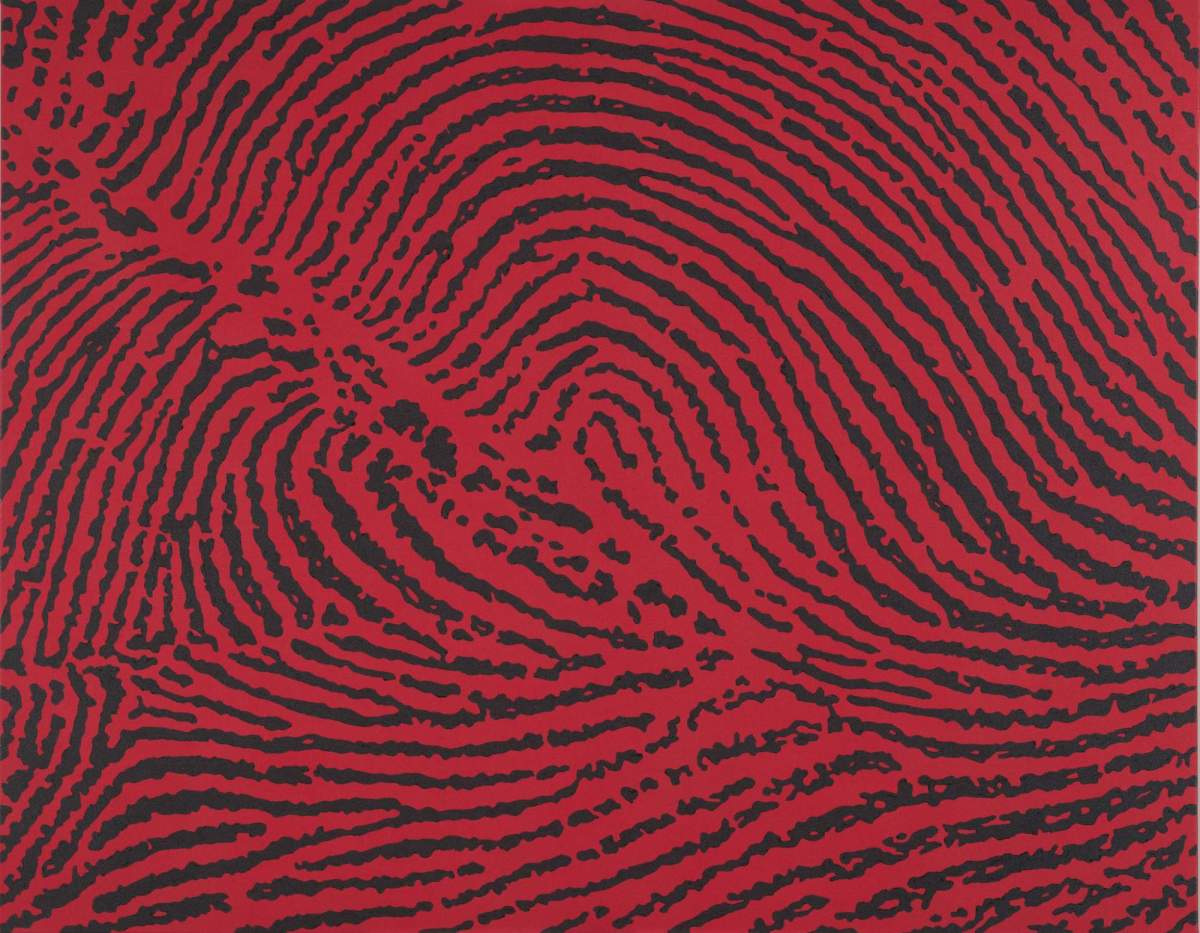
In addition to these tactics to separate her artistic identity from her gender, there are more subtle hints at Stannage’s fascination with the mutability of identity in some of her earlier works.
Kinsella describes a photographic series Stannage produced in the 2000s as a case in point – a series where the artist collected and arranged decaying household objects – like old mattresses and bed frames – to create similarly abstract ‘portraits’.
‘Her series Evidence (2006 – 07) focuses on the surface of used and discarded mattresses to provide clues to other people and other lives,’ Kinsella explains.
‘They are abject bodies that become physical stand-ins for absent human bodies.’
‘The mattresses are soiled and stained, the metal is rusty, hinges are broken and some things are so changed that we can no longer identify them. So, here again, we are seeing Miriam’s will to resist categorical references to one’s identity in these works,’ she says.
What Stannage’s wider practice reveals (among other things) is her desire to subvert the gender codes and societal structures which she saw as limiting her own and others’ agency.

Will the art world ever escape ‘woman artist’ labels?
But now, as we look back at the position taken by Stannage to distance herself from her gender for the sake of her art, can we see any differences between then and now in terms of the ways the term ‘woman artist’ is applied and understood?
For Kinsella, the Lawrence Wilson Art Gallery’s recent survey show of work by female artists from WA (which draws on works from its Cruthers Collection of Women’s Art) speaks to the ongoing importance of dialogue around historical modes of framing work by female artists.
As she explains, ‘Surveys of women’s practice, with the inclusion of many names, serve a purpose, but there remains a need for deep research and solo projects that acknowledge the tenacity, capacity and impact of a broader range of artists, with related exhibitions and publications.
‘The challenges continue as organisations and collections seek to reflect multiple streams of the history of this nation,’ she adds – pointing to the current trend by many major institutions to present shows that debunk historical narratives which have failed to include the work of artists from marginalised societal groups (such as women and people of colour).
This direction – seen especially in blockbuster shows like the National Gallery of Australia’s Know My Name and Dangerously Modern (at AGSA and AGNSW) – is surely a positive sign of progress.
But on the flip side, is this trend towards exclusive showings of female artists a sign we have failed to move past notions of women artists placed within male-dominated hierarchies?
Is it, on another level, in fact a disservice to female artists to show their work in ways that encourage gendered readings of their work? One wonders what Miriam Stannage would say if she was here to help us through these difficult attempts at change.
One also can’t help but wonder whether or not this artist would be as adamant as ever to leave her first name off her pictures, to avoid any gendered readings of her work.

